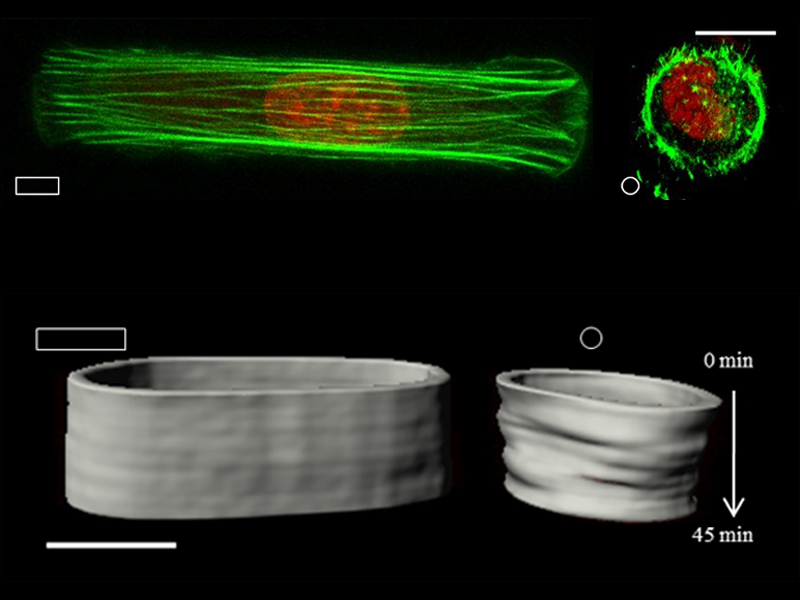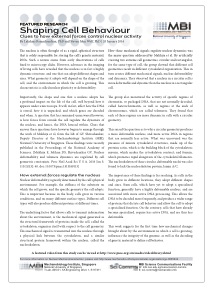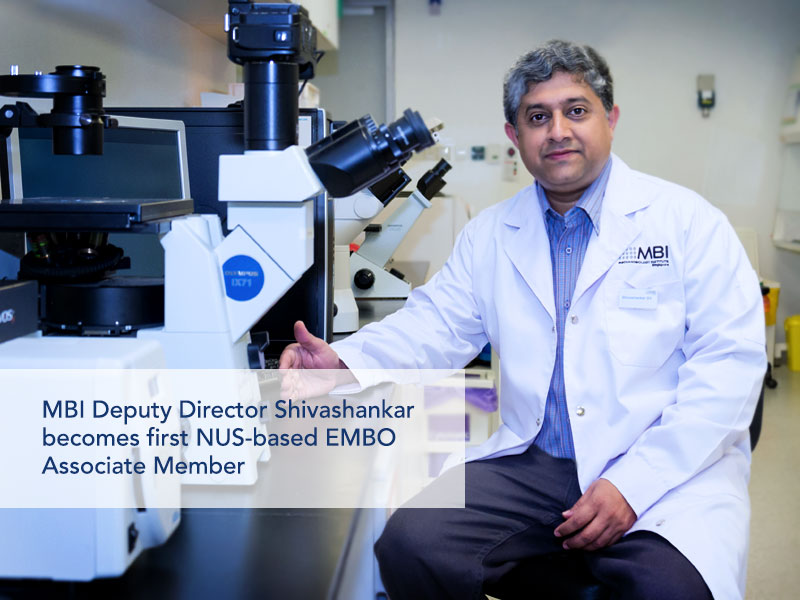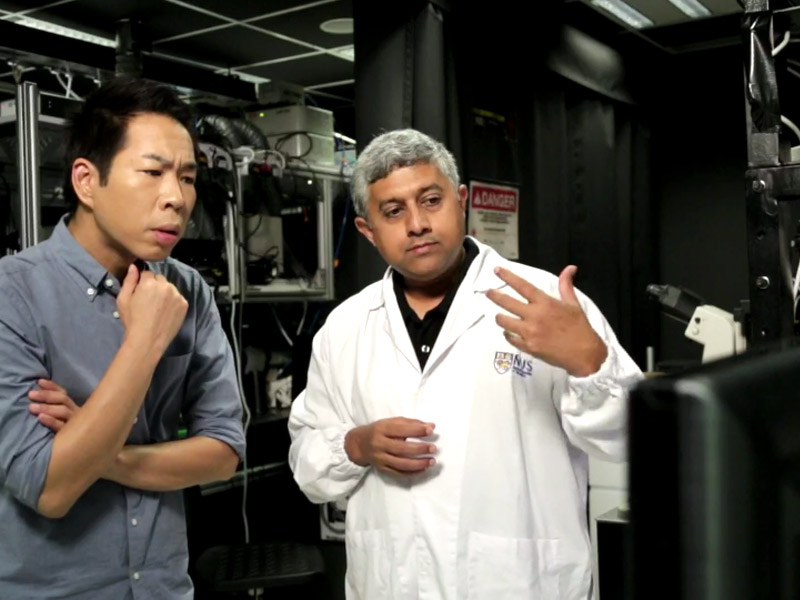Shaping Cell Behavior
Steven Wolf and Sruthi Jagannathan | January 2016
These findings were recently published in the Proceedings of the National Academy of Sciences. [Makhija E, Jokhun DS, Shivashankar GV, Nuclear deformability and telomere dynamics are regulated by cell geometric constraints. Proc Natl Acad Sci U S A. 2016 Jan 5; 113(1):E32-40. doi: 10.1073/pnas.1513189113]
Clues to how external forces control nuclear activity
The nucleus is often thought of as a rigid, spherical structure that is solely responsible for storing the cell’s genetic material; DNA. Such a notion stems from early observations of cells fixed to microscopy slides. However, advances in the imaging of living cells have revealed that the nucleus is in fact a highly dynamic structure, and one that can adopt different shapes and sizes. What geometry it adopts will depend on the shape of the cell, and the environment in which the cell is growing. This characteristic is called nuclear plasticity or deformability.
Importantly, the shape and size that a nucleus adopts has a profound impact on the life of the cell, well beyond how it appears under a microscope. It will, in fact, affect how the DNA is stored, how it is unpacked, and which genes are decoded and when. A question that has remained unanswered however, is how forces from outside the cell regulate the dynamics of the nucleus, and hence, the DNA housed within. Clues that answer these questions have however begun to emerge through the work of Makhija et al, from the lab of GV Shivashankar, Deputy Director at the Mechanobiology Institute (MBI), National University of Singapore.
These findings were recently published in the Proceedings of the National Academy of Sciences. [Makhija E, Jokhun DS, Shivashankar GV, Nuclear deformability and telomere dynamics are regulated by cell geometric constraints. Proc Natl Acad Sci U S A. 2016 Jan 5; 113(1):E32-40. doi: 10.1073/pnas.1513189113]
How external forces regulate the nucleus
Nuclear deformability is greatly determined by the cell’s physical environment. For example, the stiffness of the substrate on which the cell grows, and the specific geometry the cell adopts. This is important because in the body, cells grow in various conditions, and on many different surface types. Different cell types will also produce different proteins at different times.
The underlying factor that allows cells to transmit information about the environment, is the mechanical signal generated as the structural framework of proteins inside the cell, called the cytoskeleton, organizes itself with respect to the cell geometry. This mechanical signal is transmitted into the nucleus through a physical link between the cytoskeleton, and a similar structural protein framework within the nucleus, called the nucleoskeleton.
How these mechanical signals regulate nuclear dynamics was the major question addressed by Makhija et al. By artificially creating two extreme cell geometries, circular and rectangular, for the same type of cell, the group showed that different cell geometries result in different cytoskeletal organization. This in turn creates different mechanical signals, nuclear deformability and dynamics. They observed that a nucleus in a circular cell is more deformable and dynamic than the nucleus in a rectangular cell.
The group also monitored the activity of specific regions of chromatin, or packaged DNA, that are not normally decoded, called heterochromatin, as well as regions at the ends of chromosomes, which are called telomeres. They found that each of these regions are more dynamic in cells with a circular geometry.
This raised the question as to why a circular geometry produces a more deformable nucleus, and more active DNA in regions that are normally less active. What was uncovered was the presence of minute cytoskeletal structures, made up of the proteins actin, which is the building block of the cytoskeleton; myosin, which makes the cytoskeleton contract; and formin, which promotes rapid elongation of the cytoskeletal filaments. The nucleoskeleton of these circular, deformable nuclei was also found to lack the nucleoskeleton protein, lamin A/C.
The importance of these findings is far reaching. As cells in the body grow in different locations, they adopt different shapes and sizes. Stem cells, which have yet to adopt a specialized function, generally have a highly deformable nucleus, and are associated with more active DNA processing. This allows the DNA to be decoded more frequently, and produce a wider range of proteins that dictate cell behavior and allow the cell to adopt a specialized function. On the contrary, cells that have already become specialized, require less active DNA, and are thus less deformable.
This work suggests for the first time how mechanical changes brought about by the environment in which a cell is growing, influences the integrity of the genome, as well as the decoding of genetic material to define cell behavior.
A featured video from this study can be viewed at http://www.pnas.org/site/media/videolibrary.xhtml









